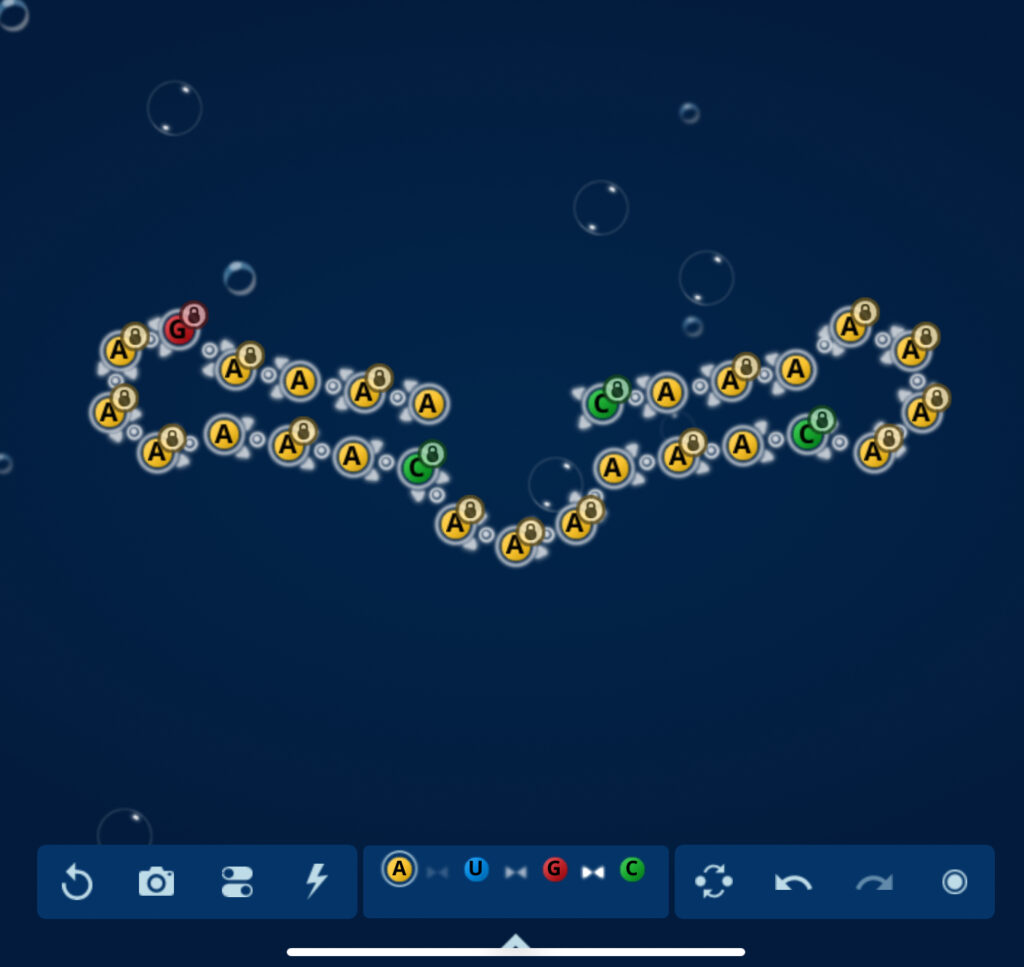When UX Turns Research Into Play
Revisiting Eterna: How UX Turned RNA Research into a Game
About five years ago, I stumbled across a curious little project called Eterna—a browser-based puzzle game where players design RNA molecules. At the time, I thought it was a clever experiment in gamification, but I didn’t stick around to see how it would evolve.
Recently, I decided to revisit it. And what I found was much more than a quirky puzzle. Eterna has become a serious platform where design, play, and science meet. It’s a fascinating example of how UX can take something as complex as RNA folding—a topic that normally requires years of study—and make it not only approachable, but genuinely useful for advancing research.
Making Science Playable
RNA folding is one of the hardest problems in biology. It involves physics, chemistry, and computational models that aren’t exactly user-friendly. Eterna’s brilliance lies in how it translates all that complexity into a puzzle:
- Nucleotides (A, U, C, G) become colored dots.
- Bonds and loops are visualized as clean, intuitive lines.
- A target shape shows you what you’re aiming for.
It feels less like science and more like solving a logic problem. When I first saw this years ago, it impressed me—but now I see just how powerful that design choice is. It lowers the barrier for anyone, regardless of background, to step in and play with ideas that could have real-world consequences.

https://eternagame.org/puzzles
Feedback That Teaches
One of the most striking aspects of Eterna is how it handles feedback. In a real lab, running an RNA experiment could take weeks. In Eterna, you see results instantly. Change a base, and the molecule re-folds right in front of you. The system updates energy scores, highlights stability issues, and gives you a sense of whether you’re on the right track.
That immediacy turns learning into a game of trial and error. It encourages curiosity and persistence, which is exactly what science requires—just usually without the playful interface.
Levels, Community, and the Cloud Lab
Back when I first noticed Eterna, the concept of “levels” was already there: tutorials, basic challenges, and harder puzzles. Today, it has grown into a whole ecosystem. New players move through onboarding, then graduate into a vibrant community where they can share strategies, design their own puzzles, and even collaborate on big challenges.
The real leap forward, though, is the Cloud Lab. Players don’t just solve virtual puzzles—they submit their designs to be synthesized and tested in real Stanford labs. The results are fed back into the game, closing the loop between play and science. That blew me away. It means anyone, from anywhere, can literally shape real experiments.
The Role of Gamification in Science
This is where Eterna goes beyond being “just a game.” Gamification, when done well, doesn’t just make things fun—it makes them engaging enough that people stick with problems that are hard and open-ended. Science is full of those problems.
By breaking research into bite-sized challenges, layering in feedback, rewards, and community, Eterna transforms a niche scientific puzzle into a collective, global effort. It gives non-experts permission to explore, fail, and try again—while also motivating them with the possibility that their solution might be the one that ends up in a real experiment.
Gamification here isn’t decoration—it’s the engine that drives sustained participation. And that participation is exactly what makes citizen science at this scale possible.
What I Take Away
Looking at Eterna again after five years, it feels less like a quirky experiment and more like proof that UX design can make the impossible accessible.
It shows that:
- Complex science can be reframed as intuitive interaction.
- Feedback loops are as powerful in research as they are in product design.
- Community and collaboration can extend expertise far beyond the lab.
- Gamification, when tied to meaningful outcomes, can mobilize thousands of people to tackle problems no single lab could solve alone.
If a game about RNA molecules can engage a global community to contribute to real science, then the same principles can—and should—be applied far more broadly.
Alex

